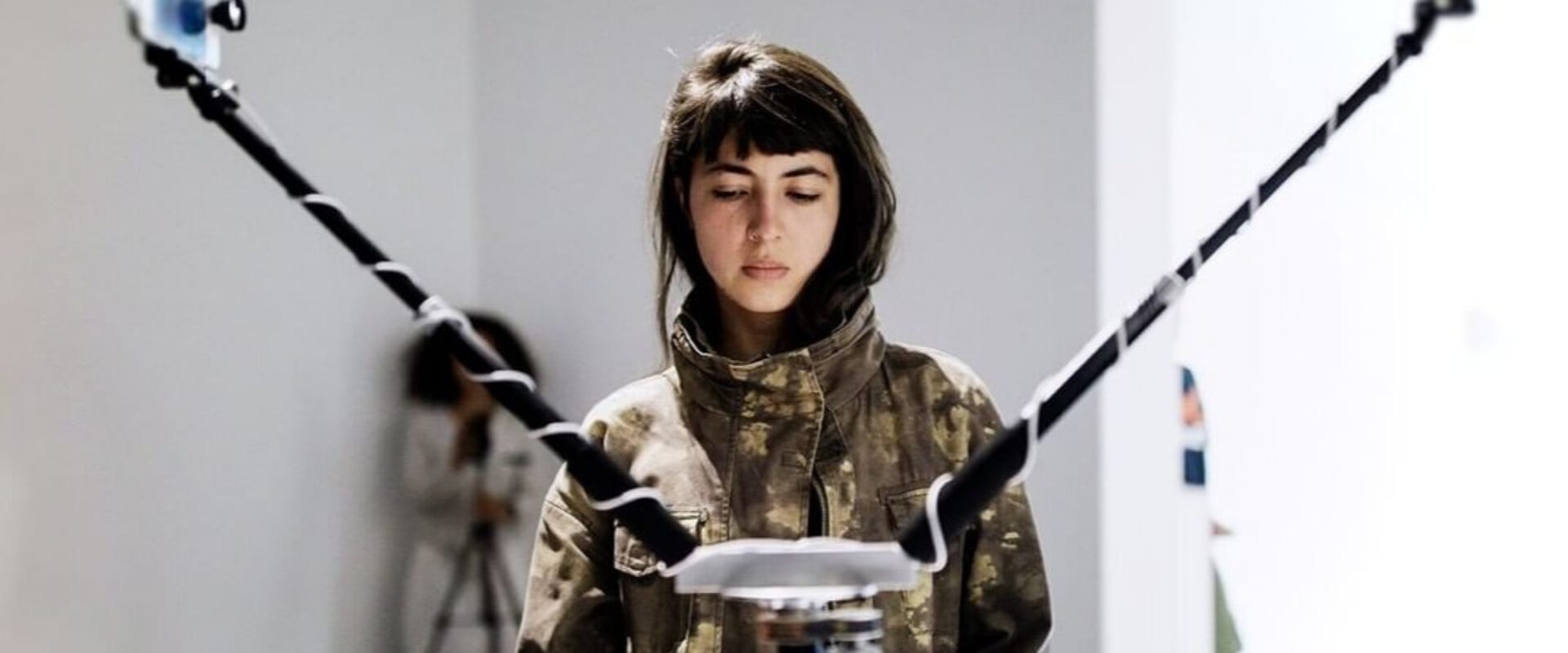 Stories
Stories
Introducing Veem’s House Artist: Paula Chaves Bonilla!
25 May 2021

For the coming three years Veem House will dedicate a part of its time, space and attention to three House Artists; artist and activist Paula Chaves Bonilla is one of them.
Having a background in Colombia where art is more clearly connected to and engaged with social movements, politics, and society Paula often feels her art is a ‘hacking device’ within the European art scene: “I feel there is this taboo connecting art with popular culture here. Above all we want to do ‘high art’ elevating ourselves from the masses, but I come from a place where I want to get closer to the masses.”
Paula is currently in residency in Veem House, for the past three months she was in her native country Colombia conducting research for a future performance. By using her methodology, ‘performative journalism’ art becomes a way to tell ‘counter histories’ of events and perspectives that weren’t told or spread due to censorship.
You’ve been in Colombia for the past three months, what untold story are you working on?
“I’m unraveling the story of my family and its involvement in militias and politics during the 70’s in Colombia. Wanting to uncover a story that has barely been told and shared with younger generations because of trauma. I’m one of the many artists and people who are tired and angry with all the repression we have undertaken for decades now. Tired of the threats, tired of the censorship, the hardship, the narco culture, the injustice, the killed ones, the tortured, violated and disappeared ones.”
“I wanted to know more about the experience of my mother as a young activist, she was part of the militias in the seventies. It is not something she often speaks of. It is not something you are proud to share, because of the stigmatization of the left wing in Colombia. There is a lot of political polarization in Colombia that overshadows the truth and complexities of our history, a lot of conservative and classist mentality that stigmatize and delegitimize the work done by the left in Colombia. So I want to honour these untold stories, spend time with these censored memories. Discover the paths that this emotional and transgenerational unblocking will open.”
How does your mother feel about you making a performance out of a story she herself feels scared to tell?
“I think she is proud that I want to do something with her life story. It would also feel different if I would make this piece in Colombia. In the Netherlands the ‘fear layer’ goes out a bit. While I feel I’m occupying and do not feel part of the Dutch culture and society, it has been the place that has embraced me and encouraged me to do this work and find my own artistic language. It is at the moment the place where I can do art in a way I hope I could do in Colombia as well.”
“I would hesitate and have more doubts about how to do this research if I were to do it in Colombia. Unfortunately the eurocentrism entwined in our society gives more legitimacy to works created abroad, especially in the global north, so I’m trying to take advantage of this and dignify a story that has been constantly obscured and misrepresented. We live in a time when sometimes the only hope for third world countries to obtain justice and exit the repression cycle is through international solidarity and visibility.”
You’re a Veem House Artist. How does your practice relate to Veem House?
“I think of us both as being on the outskirts, as an interdependent autonomous force. It may be strange to say that about an institution, but I can say that from Veem House because it is not a big institution and neither wants to operate as such. Instead of wishing to insert Veem House into a more mainstream and bigger production system I see it trying to question the politics of work and making attempts to improve them. What I appreciate of Veem House is that there is constantly a self -reflective aspect. I also recognize myself in the attempt to bring the house – or in my case art making processes- closer to society, with neighbourhood projects and collaborating with critical and inspiring artists like Ogutu Muraya and House Artist MOHA.”
What do you hope for in the coming years as a House Artist?
“I hope to grow as an artist in my practice, artistic universe, and articulation. Discovering more about my nomadism, and self-exile, and in transmitting this experience of displacement. How can I learn to translate the context where I come from in a more effective way here? How to create common ground between different universes? How to be more empathetic and in tune with others’ struggles and pains? I wish to connect other artists that might be interesting with Veem House. Artists busy with urgent political and social topics that are relevant to the process of emancipation, accountability and collective healing of contemporary society.”
With her input as a House Artist Paula Chaves Bonilla wishes to bring Veem House – just like her art- closer to society.
Paula is currently in residency in Veem House unfolding untold histories. You can join her in her research during Open Studio on the 2nd of June.

